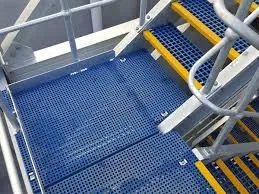
-
 Afrikaans
Afrikaans -
 Albanian
Albanian -
 Amharic
Amharic -
 Arabic
Arabic -
 Armenian
Armenian -
 Azerbaijani
Azerbaijani -
 Basque
Basque -
 Belarusian
Belarusian -
 Bengali
Bengali -
 Bosnian
Bosnian -
 Bulgarian
Bulgarian -
 Catalan
Catalan -
 Cebuano
Cebuano -
 China
China -
 China (Taiwan)
China (Taiwan) -
 Corsican
Corsican -
 Croatian
Croatian -
 Czech
Czech -
 Danish
Danish -
 Dutch
Dutch -
 English
English -
 Esperanto
Esperanto -
 Estonian
Estonian -
 Finnish
Finnish -
 French
French -
 Frisian
Frisian -
 Galician
Galician -
 Georgian
Georgian -
 German
German -
 Greek
Greek -
 Gujarati
Gujarati -
 Haitian Creole
Haitian Creole -
 hausa
hausa -
 hawaiian
hawaiian -
 Hebrew
Hebrew -
 Hindi
Hindi -
 Miao
Miao -
 Hungarian
Hungarian -
 Icelandic
Icelandic -
 igbo
igbo -
 Indonesian
Indonesian -
 irish
irish -
 Italian
Italian -
 Japanese
Japanese -
 Javanese
Javanese -
 Kannada
Kannada -
 kazakh
kazakh -
 Khmer
Khmer -
 Rwandese
Rwandese -
 Korean
Korean -
 Kurdish
Kurdish -
 Kyrgyz
Kyrgyz -
 Lao
Lao -
 Latin
Latin -
 Latvian
Latvian -
 Lithuanian
Lithuanian -
 Luxembourgish
Luxembourgish -
 Macedonian
Macedonian -
 Malgashi
Malgashi -
 Malay
Malay -
 Malayalam
Malayalam -
 Maltese
Maltese -
 Maori
Maori -
 Marathi
Marathi -
 Mongolian
Mongolian -
 Myanmar
Myanmar -
 Nepali
Nepali -
 Norwegian
Norwegian -
 Norwegian
Norwegian -
 Occitan
Occitan -
 Pashto
Pashto -
 Persian
Persian -
 Polish
Polish -
 Portuguese
Portuguese -
 Punjabi
Punjabi -
 Romanian
Romanian -
 Russian
Russian -
 Samoan
Samoan -
 Scottish Gaelic
Scottish Gaelic -
 Serbian
Serbian -
 Sesotho
Sesotho -
 Shona
Shona -
 Sindhi
Sindhi -
 Sinhala
Sinhala -
 Slovak
Slovak -
 Slovenian
Slovenian -
 Somali
Somali -
 Spanish
Spanish -
 Sundanese
Sundanese -
 Swahili
Swahili -
 Swedish
Swedish -
 Tagalog
Tagalog -
 Tajik
Tajik -
 Tamil
Tamil -
 Tatar
Tatar -
 Telugu
Telugu -
 Thai
Thai -
 Turkish
Turkish -
 Turkmen
Turkmen -
 Ukrainian
Ukrainian -
 Urdu
Urdu -
 Uighur
Uighur -
 Uzbek
Uzbek -
 Vietnamese
Vietnamese -
 Welsh
Welsh -
 Bantu
Bantu -
 Yiddish
Yiddish -
 Yoruba
Yoruba -
 Zulu
Zulu
frp pipes and fittings utilized in ship construction
FRP Pipes and Fittings Utilized in Ship Construction
Fiber Reinforced Polymer (FRP) pipes and fittings have emerged as significant components in modern ship construction, providing innovative solutions that enhance performance, durability, and efficiency. The maritime industry is continually evolving, seeking materials that offer superior resistance to corrosion, lightweight properties, and strength. FRP, consisting of a polymer matrix reinforced with fibers, typically glass or carbon, addresses these needs exceptionally well.
One of the primary advantages of FRP pipes is their outstanding resistance to corrosive environments. Ships operate in various challenging conditions, including exposure to sea water and chemicals used in different processes onboard. Traditional materials, such as steel and iron, often succumb to rust and degradation over time, necessitating frequent repairs and maintenance. In contrast, FRP's inert nature means it can withstand harsh chemicals and saline environments without deteriorating, significantly reducing lifecycle costs and enhancing longevity.
Moreover, the lightweight characteristics of FRP make it an ideal choice for ship construction. Reducing the overall weight of a vessel contributes to improved fuel efficiency and increased payload capacity. For instance, lighter materials help decrease the energy consumption during voyages, which is crucial in a world increasingly focused on sustainability and reducing greenhouse gas emissions. When utilized in systems like drainage, ballast, and cooling, the reduced weight directly translates into significant fuel savings over time.
frp pipes and fittings utilized in ship construction

The mechanical properties of FRP also make it a favorable option for various fittings and piping configurations. FRP pipes can be designed to handle high pressure and temperature conditions typical in maritime applications. Their strength and flexibility allow for easier installation and maintenance, which can lead to reduced labor costs and downtime during repairs or upgrades.
The fabrication process of FRP allows for a high degree of customization, enabling manufacturers to produce pipes and fittings that meet specific design requirements and standards. This adaptability ensures that ships can be outfitted with tailored systems that enhance overall performance. Furthermore, the seamless integration of FRP piping systems with other ship components provides opportunities for more compact and efficient designs.
In terms of safety, FRP also offers exceptional fire-resistant properties, making it a suitable choice for critical systems aboard vessels. Coupled with its low thermal conductivity, FRP can contribute to the safety of various ship operations, ensuring that emergency response measures are prioritized and potential hazards are mitigated.
In conclusion, the adoption of FRP pipes and fittings in ship construction reflects the maritime industry's commitment to innovation and efficiency. As vessels face increasing demands for sustainability and performance enhancements, FRP materials present a compelling solution. The unique attributes of FRP—corrosion resistance, lightweight nature, mechanical strength, and customizability—significantly enhance the longevity, safety, and operational efficiency of modern maritime vessels. As the technology continues to evolve, we can expect even greater advancements in the use of FRP materials in shipbuilding, paving the way for a more efficient and sustainable maritime future.
Latest news
-
Exploring the Benefits of Top Hammer Drifter Rods for Enhanced Drilling PerformanceNewsJun.10,2025
-
High-Precision Fiberglass Winding Machine for GRP/FRP Pipe Production – Reliable & Efficient SolutionsNewsJun.10,2025
-
FRP Pipes & Fittings for Shipbuilding - Corrosion-Resistant & LightweightNewsJun.09,2025
-
Premium FRP Flooring Solutions Durable & Slip-ResistantNewsJun.09,2025
-
Premium Fiberglass Rectangular Tanks Durable & Lightweight SolutionNewsJun.09,2025
-
Tapered Drill String Design Guide Durable Performance & UsesNewsJun.09,2025









